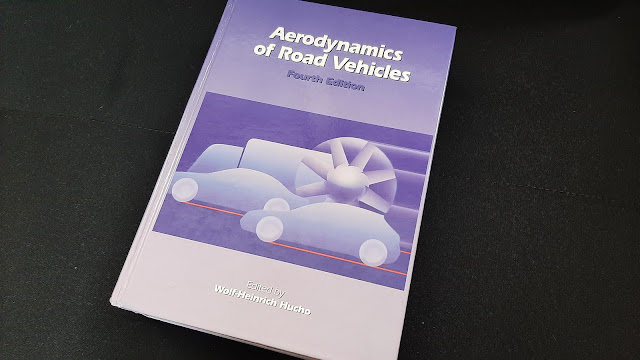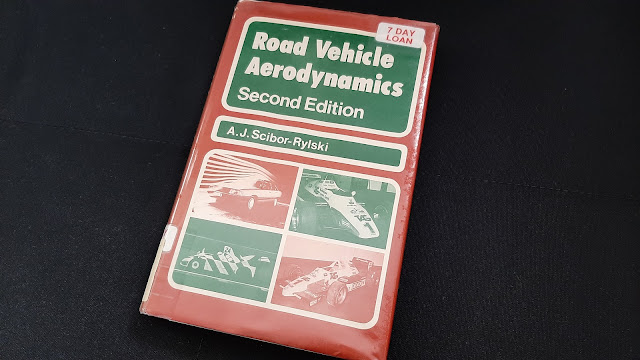The Amateur Aerodynamicist's Library
This is a good book to have (that’s my copy above, which I bought several years ago), but it is 25 years out of date. This was the last version edited by Wolf-Heinrich Hucho, published in 1998; the SAE released a comprehensively updated 5th edition in 2016 edited by Thomas Schuetz of BMW.
Curiously, my own library on automotive aerodynamics dwarfs that of this well-known engineering school. Here’s (some of) what you can find on my bookshelves.
This tome, although of limited direct applicability to modern vehicle aerodynamics, is still a fundamental text which comprehensively documents the experimental investigations into fluid drag that underpin our modern understanding. Hoerner was meticulous and thorough in his wind- and water-tunnel work, researching how shape changes and parameter changes affect fluid dynamic forces.
Unlike the other books on this list, this isn’t a “book” per se but a collection of papers presented at a conference. That conference was the Symposium on Aerodynamic Drag that took place at the GM Technical Center in 1976 and featured presentations by the giants of automotive aerodynamic research at the height of their careers: Wolf-Heinrich Hucho, P.W. Bearman, Gino Sovran, W.A. Mair, and others. Like other older sources, it is an interesting snapshot of the “state of the art” at the time, and is useful for understanding some of the theory behind aerodynamics as it was being discovered.
Scibor-Rylski’s book contains perhaps the best explanations of how aerodynamic forces form. This book is a little more math-heavy than the others on this list, as Scibor-Rylski was interested in modeling cars in crosswinds, turning corners in constant wind, and other real-world problems. If that isn’t your thing, don’t bother with the last several chapters, but the first part of the book is indispensable for anyone who really wants to grasp the formation of drag and lift.
Since its first edition in the late 1970s, this reference has been THE go-to source for information on aerodynamic drag and lift, the history of aerodynamic research, basics of fluid mechanics, stability, testing, internal flows, and more. At over 1,000 pages, it represents the contributions of dozens of authors and researchers.
This book has a more recent edition, but I still find it useful despite a lot of the information it contains being out of date.
If you only buy one book on this list, it should be this one. An especially useful reference for non-professionals, this one is light on math, well-written and clearly explained, and draws on the extensive research experience of its author. I can’t recommend it highly enough as an introduction to aerodynamics.
Not a resource for automotive aerodynamics specifically, this book lives up to its subtitle. McLean, a retired Boeing engineer, is not shy about building logical arguments for understanding the mechanisms of drag and fluid flows and swatting away misconceptions. Because of that, this is a very math-heavy resource; don’t bother with it unless you’ve had at least 3 semesters of calculus (through vector calculus, partial differentiation, multiple integration, etc.).
I was very surprised to open this book—ostensibly an update of this important reference—to find that only one chapter had been carried over from the previous edition! Everything else (nearly 1,200 pages) is completely new, and unlike earlier editions the illustrations are all full-color. This is simply the most recent and most comprehensive book available on automotive aerodynamics, period. It’s expensive, but if you’re at all serious about the subject it’s well worth the investment.













Comments
Post a Comment